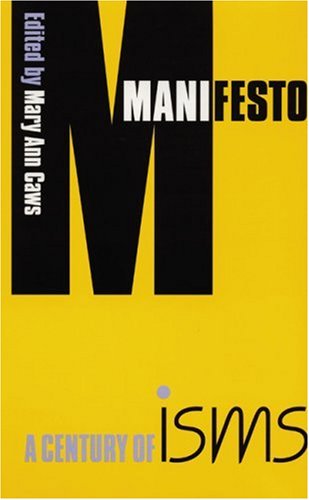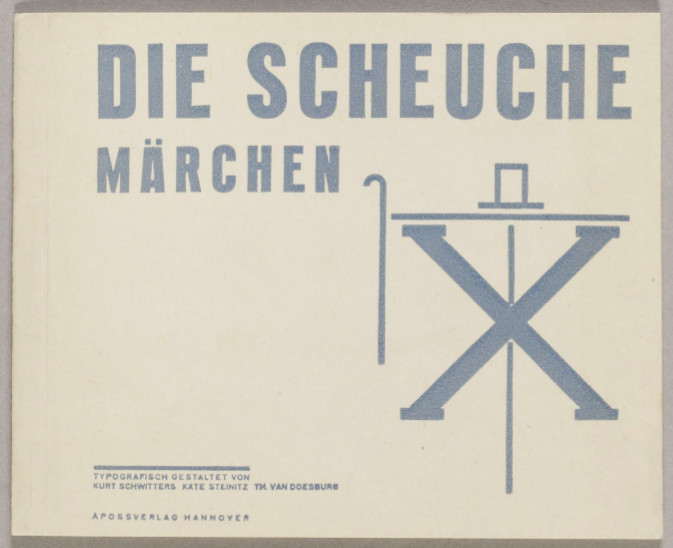Mary Ann Caws (ed.): Manifesto: A Century of Isms (2001)
Filed under book | Tags: · art, art criticism, art history, avant-garde, bauhaus, cubism, dada, de stijl, expressionism, fauvism, futurism, history of literature, imagism, lettrism, literature, manifesto, modernism, surrealism, symbolism, vorticism

“An anthology featuring over 200 artistic and cultural manifestos from a wide range of countries. It includes texts ranging from Kurt Schwitters’ ‘Cow Manifesto’ to those written in the name of well-known movements – imagism, cubism, surrealism, symbolism, and projectivism – and less well-known ones – lettrism, acmeism, concretism, and rayonism.”
Publisher University of Nebraska Press, Lincoln, 2001
ISBN 0803264070, 9780803264076
xxxiv+713 pages
Reviews: Greil Marcus (Artforum, 2001), Publishers Weekly (2001), Gail McDonald (symploke, 2003), Cynthia Ellen Patton (College Literature, 2003).
PDF (14 MB, updated on 2017-11-21)
Comment (0)Piet Mondrian: Neue Gestaltung, Neoplastizimus, Nieuwe Beelding (1925) [German]
Filed under book | Tags: · architecture, art, art theory, bauhaus, de stijl, music, painting, theatre, theory

Number 5 in the series of 14 seminal Bauhaus books.
Contains German translations of five essays by Piet Mondrian: “Die neue Gestaltung. (Das Generalprinzip gleichgewichtiger Gestaltung)” (pp 5-28), “Die neue Gestaltung in der Musik und die futuristischen Italienischen Bruitisten” (29-41), “Die neue Gestaltung, ihre Verwirklichung in der Musik und im zukünftigen Theater” (42-53), “Die Verwirklichung der neuen Gestaltung in weiter Zukunft und in der heutigen Architektur” (54-64), and “Muss die Malerei der Architektur gegenüber als minderwertig gelten?” (65-66).
Publisher Albert Langen, Munich, 1925
Typography and cover: L. Moholy-Nagy
Bauhausbücher series, 5
66 pages
via acousmatic
PDF (5 MB)
PDF, JPG (in Heidelberg U Library, added on 2019-7-7)
See also other writings and translations of Mondrian and other Bauhaus publications on Monoskop wiki.
Comment (1)Kurt Schwitters, Käte Steinitz, Theo van Doesburg: Die Scheuche: Märchen (1925–) [DE, EN, ES]
Filed under artist publishing, children's book | Tags: · dada, de stijl, graphic design, typography

“In Die Scheuche: Märchen [The Scarecrow: A Fairytale] phrasing borrowed from German fairytales, grammar lessons, and religious texts combine into a formal hybrid that is cast in type. For the creators of this children’s book, such serious play with ready-made genres and print components offered a means of collecting the fragments of the past and assembling them to rebuild for the future. The narrative itself thematizes this pursuit: “once upon a time” there was a scarecrow well-appointed in the accoutrements of bourgeoisie comfort, complete with frockcoat, lace scarf, and cane. He is mocked by fowl and beaten by the farmer who made him. A child then pries the cane from the farmer (who has stolen it from the scarecrow) and with a single blow dismantles the order of ownership. The story ends with the ghosts of the items’ erstwhile owners arriving to reclaim their effects.” (Source)
Publisher Apossverlag, Hannover, 1925
12 pages, 13 x 16 cm
via Kunsthaus Zurich
Commentary: Leslie Atzmon (Design Issues, 1996)
Die Scheuche: Märchen (German, 1925, 22 MB, updated on 2020-9-5)
The Scarecrow (English, trans. Jack Zipes, typogr. Barrie Tullet, 2009, partial view on Google Books)
El espantapajaros. Cuento (Spanish, 2012, added on 2017-10-3)

